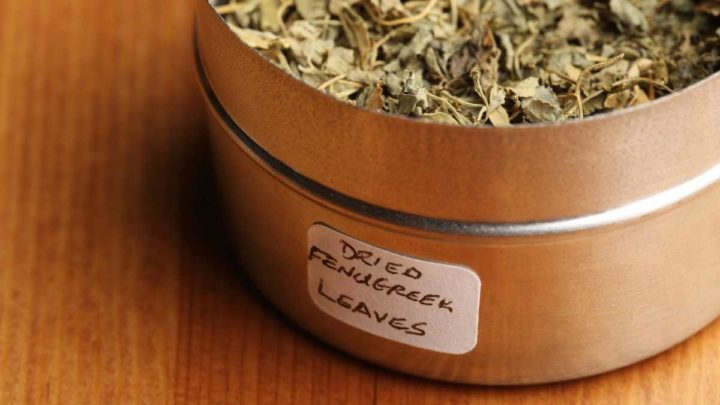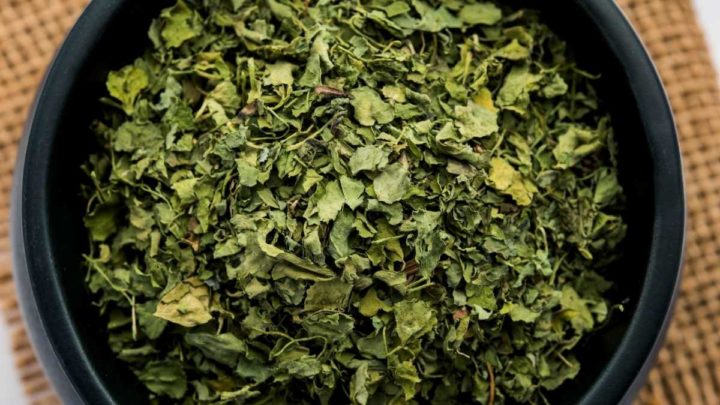Fenugreek Leaves Substitute
Native to the Mediterranean region, India, and southern Europe, Fenugreek is both an herb and a spice that’s known for its cooking and medicinal purposes. It can be used in the form of fresh leaves, dried leaves, seeds, and powder.
Kasoori methi – is another name for fenugreek leaves that have been very slowly dried.
Fenugreek is quite popular in Indian, North African, and Middle Eastern cuisines. With a dominant flavor similar to maple syrup, fenugreek deepens dishes’ flavors by giving them a uniquely sweet yet bitter taste. It also has slightly earthy, nutty undertones.
Because fenugreek leaves aren’t always readily available, what can we use as an alternative? There are some fenugreek leaves substitutes that can deliver a similar taste when cooked.
You might also be interested in
- Kaffir Lime is often hard to substitute, see our suggested alternatives.
Fenugreek Leaves Substitutes
Although not all substitutes may give your dish the exact taste of fenugreek leaves, many of them have similar flavor profiles.
When used properly, fenugreek leaves substitutes can alleviate any dish so that you won’t miss the fenugreek flavor.
Alternatives for Leeks In Recipe
Maple Syrup
Maple syrup is possibly the number one most recommended fenugreek leaves substitute. The two flavors are so similar that many imitation maple syrup products have fenugreek in their ingredients.
In many ways, maple syrup is strikingly similar to fenugreek. Both of them are known for their distinct smell, which is caused by a chemical compound called sotalone. Maple syrup and fenugreek also have the same sweet, nutty flavor with bitter undertones.
Using maple syrup can also bring the same consistency as fenugreek to the dish. All you have to do is splash a small amount of maple syrup at the end of cooking time. This ensures that you don’t lose the aroma and flavor, which can fade if cooked for a long time.
Make sure you don’t use too much maple syrup because it can increase the sweetness of your dish.

Yellow Mustard Seeds
While maple syrup is recommended the most as fenugreek leaves substitute, yellow mustard seeds are incredibly similar in flavor to fenugreek as well. Some recipes even recommend mixing these seeds with a little bit of maple for an indistinguishable fenugreek flavor.
Yellow mustard seeds have a similarly mildly bitter, earthy flavor without the sweetness. They’re a great option if you’re looking for the earthiness of fenugreek but don’t want the dish to be sweet.
When cooking with yellow mustard seeds, use half the portion of fenugreek leaves. Then, crush the seeds and slightly toast them before adding them to your dish. This deepens the flavor of the seeds, making them even more similar to fenugreek.
Celery Leaves
Celery leaves can be used in almost any recipe that calls for fenugreek leaves. They have the same mildly bitter taste, with a hint of nuttiness. To achieve the same sweet flavor of fenugreek, you can add a pinch of sugar or maple syrup.
If fenugreek leaves aren’t readily available, you can grab some celery leaves, chop them and add them as you would with fenugreek leaves.

Curry Powder
If you’re in a pinch, you can use curry powder as a substitute for fenugreek leaves. Most blends of curry powder will contain fenugreek, therefore they tend to have a close flavor profile to fenugreek leaves.
To tone down the additional flavors that are in the curry powder, cook the powder first with oil. This should enhance the fenugreek flavor and abate the other overpowering flavors.
Other options you can consider are spinach, kale, and watercress. While the tastes will be similar they are different. The best alternative of the above three are spinach as both the aroma and texture are similar.
What is the taste of fenugreek leaves?
Fenugreek leaves are a little nutty and have also a sweetness in their tasting. However, dried fenugreek leaves have a slightly bitter and sweet taste, plus a finish on the palate similar to maple syrup.